Who is Dr. Michael Greger?
Dr. Michael Greger is a doctor who promotes the power of plant-based eating to prevent, treat and even reverse many diseases.
He’s been writing and making videos for the non-profit website NutritionFacts.org for many years, which is totally funded by donation. He also gives away all his book and speaking profits to charity, which ups his credibility in my book.
As a child, Dr. Michael Gregor saw his grandma recover from heart disease almost miraculously by following a plant-based diet. At 65 years old, his grandma had already undergone multiple heart bypass surgeries for clogged arteries. She was stuck in a wheelchair because of chest pain and doctors told her she would only survive a short time.
Then one day his grandma saw a news story on TV about Nathan Pritikin, a man who ran health centers claiming to reverse heart disease through a plant-based diet and exercise. She rolled into one of these centers on a wheelchair, and within 3 weeks she was walking miles every day. She ended up living to the age of 96.
Dr. Greger admits having some bias against eating animal products. (He serves as a director in the Humane Society, an organization which promotes animal welfare.) Certainly many of his biggest fans are vegans.
The nutrition website Healthline published a great detailed review of this book. Their ultimate conclusion was that Dr. Greger shares a lot of very valuable information for what to eat to improve your health, but he is occasionally guilty of cherry picking. This means he picks the science that agrees with his plant-based views and sometimes ignores good studies that contradict that view. For example, in this book he misses the benefits of omega 3 oils found in seafood that can protect against heart disease, Alzheimer’s and asthma.
Now let’s jump into some of the key lessons from How Not to Die. The first one is…
🥗 1. Whole Plant Foods: Eat a diet of whole plant foods to protect yourself from the top killing diseases
Chronic diseases can be prevented by eating more whole plant foods, and less animal or processed foods. This is the most important point of this book, repeated over and over again. The rise of chronic diseases worldwide cannot be explained away by people simply living longer.
- People are eating differently than they did before and this is increasing rates of many diseases. For example, in China a recent shift from a traditional plant based diet to more processed and animal foods has caused a sharp increase in heart disease, diabetes, cancer, etc. And this is true for many other countries too.
- 80% or more of your risk for the top killing diseases comes from your diet and lifestyle. That’s right, only 10-20% of your risk comes from your genes for heart disease, cancer and chronic lung disease. And these are the most deadly diseases in developed countries. The good news is, you have significant control about living longer and not spending your old age in a crippled condition.
The truth is that adhering to just four simple healthy lifestyle factors can have a strong impact on the prevention of chronic diseases: not smoking, not being obese, getting a half hour of exercise a day, and eating healthier—defined as consuming more fruits, veggies, and whole grains and less meat. Those four factors alone were found to account for 78 percent of chronic disease risk.
- In western medicine, doctors are not compensated for giving healthy eating directions. In a fee-for-service model, doctors are paid for prescribing pills and doing surgeries. One study found the average time a doctor spends talking about nutrition is 10 seconds per patient visit. In fact, in medical school doctors are only required 21 hours of nutrition training.
- Prescription drugs are now a trillion-dollar industry worldwide. Big pharmaceutical companies spend a lot of money recruiting more doctors to prescribe their products. They also advertise directly to consumers. All this marketing fuel a myth that if you get sick, then the doctor will always have the cure. But while modern medicine is very good at treating acute problems like infections, it is far less effective at treating chronic diseases.
Chronic diseases are becoming more common, not simply because people are living longer, but because they are eating more animal and processed foods. You can decrease your risk for chronic diseases by 78% with a healthier lifestyle, including eating whole plant foods.
📋 2. Daily Dozen: Follow Dr. Greger’s “daily dozen” checklist that simplifies his nutrition recommendations
Dr. Michael Greger created a simple checklist of a dozen types of foods we should eat daily. This list is a distillation of most of his health research and recommendations. (Even Dr. Greger doesn’t follow this perfectly every single day, but this is what he aims for.)
This daily checklist shows not just what we should eat, but also in what proportions. The majority of our food should be vegetables, greens, fruits and beans. So for example, you’re better off cooking a big plate of veggies and beans with some pasta mixed in rather than a big plate of pasta with a few veggies on top.
So here are his daily recommendation:
- 1.5 cups of beans, including soybeans, chickpeas, lentils, black beans, etc. (A quarter cup of hummus or bean dip counts as a half cup.) Beans contain many nutrients including protein, iron, zinc, fibre and potassium, while being low in fat. Be warned that most canned beans contain lots of salt, so find the ones that don’t. Meat alternatives are often made with beans, but they contain half as much nutrition as unprocessed beans, although Dr. Greger says it is still healthier than animal meat.
- 0.5 cups of berries, including blueberries, cherries, cranberries, raspberries, strawberries, grapes, etc. 1/3 of a cup of dried fruit counts as a full cup. Berries contain a lot of antioxidants which we’ll talk a lot more about later.
- 3 cups of other fruits, including bananas, oranges, apples, avocados, plums, pineapple, dried apricots, etc. Some people may be concerned about the sugar in fruits. Well, don’t worry, because studies found people who ate more whole fruits were less likely to develop type 2 diabetes. However, Harvard researchers found people who drank more fruit juices were more likely to develop diabetes. Why? Whole fruits contain fibre, antioxidants and other nutrients which juices don’t, which appears to cancel the bad effects of fruit sugar. So stick with whole fruits.
- 2 cups of greens, including spinach, arugula, kale and other dark leafy vegetables. Half a cup of cooked greens counts as one cup because they shrink while cooking. A group of Harvard researchers found your risk for heart attack or stroke decreases by 20 percent for every additional daily serving of greens you eat.
- 0.5 cups of cruciferous vegetables, including broccoli, kale, cauliflower, cabbage, brussels sprout, collared greens, etc. Cruciferous veggies contain some of the highest levels of vitamins and nutrients of any food.
- In particular, Dr. Greger highlights a compound only found in cruciferous vegetables called sulforaphane. Studies show sulforaphane has promising health benefits for preventing cancer and brain decline. Unfortunately, sulforaphane is only created when two enzymes combine while the veggies are being chewed or cut. The heat from cooking destroys one of the enzymes needed to create sulforaphane. This means if you cook broccoli, then it won’t have this beneficial compound. However, there is a clever way around this. You can cut the broccoli 40 minutes before cooking and let it sit. This will give enough time for sulforaphane to be created and then you can cook them as you like.
- 0.5 cups of other vegetables, including onions, bell peppers, corn, carrots, garlic, squash, tomatoes, sweet potatoes and more. Dr. Greger includes mushrooms in this category too.
- 3 servings of whole grains, including oatmeal, brown rice, bread, barley, popcorn, pasta, etc. (A serving is a slice of bread, half a bagel or a half cup cooked grains.) Whole grains are recommended by most health authorities and seem to reduce risk for many diseases. However, refined grains like white bread are a different story. When grains are refined into flour then eaten in a bread or pasta, then they appear to have negative health effects. We’ll talk more about this in the section on diabetes.
- Beware that many products labeled as “multigrain”, “100% wheat”, etc are not really whole grain. To find out if a product is truly whole grain, Dr. Greger has a “5-to-1 Rule” which says the ratio of carbohydrate to fiber should be 5:1 or less. For example, if you pick up a bread in the store and see on the nutrition label that it has 25 grams of carbohydrates, then it needs to have at least 5 grams of fiber to meet this 5:1 ratio.
- 1/4 cup of nuts or seeds. (OR about 2 tablespoons nut butter.) This includes almonds, hazelnuts, pecans, pistachios, sunflower seeds and walnuts. Walnuts may be the healthiest nuts because they have the highest level of antioxidants and omega 3. One study found eating nuts seems to cut risk of stroke in half. Another study found eating a serving of nuts 5 days a week seems to increase life expectancy by two years.
- 1 tablespoon of flaxseeds, which can be easily mixed into other foods like smoothies, oatmeal or muffins. In one study, a quarter cup of flaxseeds daily was found to decrease blood pressure even better than some of the leading drugs. Flaxseeds have also been shown to help control blood sugar, cholesterol and inflammation levels, not to mention treating constipation. There are also promising studies showing anti-cancer benefits, for prostate cancer in particular. We’ll talk a lot more about the benefits of flaxseeds later, Dr. Greger is a big fan.
- 1/4 teaspoon of turmeric, plus other herbs and spices. Any ones you like such as basil, cilantro, cinnamon, curry powder, garlic, lemongrass, oregano, parsley, pepper, etc. But avoid salt, which raises blood pressure and most of us eat more than enough salt anyway. Turmeric is the spice that gives curry its yellow colour. It contains the compound curcumin which has powerful anti-inflammatory, antioxidant and cancer-fighting benefits. Eat turmeric with a bit of black pepper for your body to properly absorb it.
- 5 glasses (12 ounce) of beverages. Water is a good default option. Teas and coffees are also good.
- Green tea has some surprising health benefits. Researchers monitoring people’s brainwaves through EEG machines found that drinking green tea puts people into a state of mind called the alpha state. In the alpha state you feel more relaxed and alert simultaneously. This state is reached by monks when meditating, but drinking green tea seems to get you there too, which may explain why it is such a popular drink worldwide.
- Coffee also has some health benefits. Studies find people who drink 2 or more cups per day are half as likely to commit suicide and one-third less likely to get Alzheimers. People who drink the most coffee also have 50% lower risk of liver cancer and 92% lower risk of dying from other chronic liver disease. However, adding sugar to your coffee cancels many of these benefits.
- 90 minutes of moderate exercise like walking, or 40 minutes of more intense exercise like basketball. Exercise does not have as big of an effect on losing weight as most people think. However, exercise is very beneficial for health in other ways, like helping you live longer.
So that’s all for the daily dozen!
How about vitamins or supplements? In general, you can get the nutrients your body needs through eating whole plant foods. However, there are a couple exceptions:
- 250mcg of Vitamin B12 daily is required, or if you’re older increase that to 1000mcg daily. A Vitamin B12 supplement is essential for those eating a vegan diet because B12 is mostly found in animal foods. Find B12 in the form of cyanocobalamin (it’ll say this on the bottle) because there isn’t much scientific evidence for the effectiveness of other common forms like methylcobalamin.]
- Also take 2000 IUs of Vitamin D3 each day. This is especially important if you live in a northern area, spend a lot of time indoors and during wintertime.
If you want to lower your risk for chronic disease, then every day eat: beans, whole grains, fruits, berries, greens, nuts, flaxseeds, turmeric and vegetables including cruciferous veggies. Also a few cups of water and around an hour of exercise depending on intensity.
💔 3. Less Heart Disease: Avoid heart disease by eating less trans and saturated fats
Heart disease kills about 400,000 people in the US every year. That makes it the top cause of death in America. What’s worse is that it is totally preventable.
- In some parts of the world where people ate a traditional plant based diet, there was almost no heart disease. For example, in the famous China Study, researchers studied half a million rural Chinese people. In men under the age of 65, they could not find a single death caused by coronary artery disease. Elsewhere, in rural Uganda of central Africa, researchers autopsied 632 people and found just one case of a heart attack.
- But is that just because people in those areas don’t live as long? Nope. They found Americans in St Louis had 136 heart attacks for the same number of age-matched people. While traditional Chinese and African foods are obviously very different, they are both based on plants, vegetables and grains.
- Heart disease is caused by cholesterol-rich fatty deposits called atherosclerotic plaque. This plaque builds up inside the walls of our arteries as we age, making them hard and restricting blood flow.
- To avoid this plaque buildup, the LDL cholesterol levels in your blood must be around 50-70 mg/dL. At that level people just don’t seem to get heart disease. Unfortunately, the average LDL cholesterol level in the US is much higher, around 110 to 130 mg/dL.
To become virtually heart-attack proof, you need to get your LDL cholesterol at least under 70 mg/dL.
How to reduce LDL cholesterol levels?
To reduce your LDL cholesterol levels, Dr. Greger says you must eat less trans fats, less saturated fats and somewhat less dietary cholesterol.
- Trans fats are found in processed foods, especially those made with partially hydrogenated oils like packaged baked goods. Smaller amounts of trans fats also occur naturally in dairy and meats. There is good news on this front: In the past 20 years the amount of trans fats found in supermarket foods decreased by over 86% in response to pressure from health authorities. Then something incredible happened: the average American person’s LDL cholesterol levels decreased for the first time in decades. The trans fats are widely seen as being responsible for this change. Then in 2018 the US and Canada banned products containing partially hydrogenated oils altogether.
- Saturated fats are found in milk, cheese, butter, fatty meats, coconut oil and palm oil. For a couple decades health authorities including the American Heart Association have advised eating less saturated fat to lower LDL cholesterol. However, in the past few years some large scientific reviews have not found a strong link between saturated fat and heart disease. (There does at least seem to be a consensus that monounsaturated fats which are found in olives, nuts, fatty fish and seeds are protective against heart disease.)
- Dietary cholesterol is found most in eggs, liver and other animal foods. Avoiding foods with high cholesterol was strongly recommended in the past, but now health authorities say there is a very weak link between dietary cholesterol and the cholesterol in your blood.
People who once at vegetarian diets but then started to eat meat at least once a week experienced a 146 percent increase in odds of heart disease, a 152 percent increase in stroke, a 166 percent increase in diabetes, and a 231 percent increase in odds for weight gain.
- Eating a plant based diet seems to be just as effective for lowering total cholesterol as statin drugs, says Dr. Greger. Currently, doctors often prescribe drugs called statins to lower blood cholesterol levels for people at high risk of a heart attack. These drugs are very common. In fact, the statin drug Lipitor was the best selling drug over the past 25 years, raking in tens of billions of dollars. However, there are many side effects from statins, including potential muscle and liver damage. The good news is that studies show plant based diets are as effective as statins for lowering blood cholesterol, but without the negative side effects.
- A whole-food plant-based diet can not only prevent heart disease, but even reverse it. Pioneering doctors like Nathan Pritikin and Dean Ornish showed that after eating a plant based diet for a few months, the plaque in a person’s arteries actually begins to dissolve. When the causes of the plaque (unhealthy foods) are no longer being introduced into the body, then the body can slowly heal itself.
Studies show a plant based diet can not only prevent heart disease, but even reverse it. If you want to reduce your risk for heart disease, keep your LDL cholesterol level under 70 mg/dL. You can do this by eating whole plant foods and avoiding trans fats in processed foods and saturated fats in animal products like dairy.
🌬️ 4. Lung Health: Avoid lung diseases by eating turmeric, cruciferous veggies and not inhaling smoke
Lung diseases are the second leading killer in the US, killing about 300,000 people per year. The most deadly lung diseases include lung cancer, chronic obstructive pulmonary disease (COPD) and asthma. Lung cancer is particularly deadly, causing more deaths than the next 3 most common cancers combined.
- Not smoking is the best thing you can do to avoid lung diseases. Smoking encourages cancer in two ways. First, the smoke makes cancer DNA mutations more likely. Second, smoking weakens the immune system so it is less able to fight infections. Three-quarters of cases of lung cancer are attributed to smoking tobacco. Many more cases are attributed to second hand smoke. COPD is another disease mostly caused by smoking that affects 24 million Americans, where it becomes progressively harder to breathe.
- Smoke from cooking meat may also cause lung diseases. Frying fat, oil or meat causes chemicals that cause mutations to be released into the air. A study of Chinese women found those who fried meat daily had triple the risk of lung cancer compared to those who didn’t. A different type of study from UC Davis found that fumes from cooking bacon or beef caused DNA mutations, while fumes from cooking a soy-based product did not. The researchers said this may explain why cooks have a higher rate of lung diseases than average, and vegetarians a lower rate.
- Cruciferous vegetables like broccoli and kale may help reduce the damage caused by smoking. Researchers told a group of smokers to eat just one stalk of broccoli per day. Over the next 10 days they found 41% less DNA mutations in their blood compared to smokers who didn’t eat broccoli.
- Turmeric also has promising anti-cancer potential. Remember turmeric is the root from the ginger family often sold as a bright golden spice used in Indian curries. Now, smokers usually have a DNA mutation rate in their urine much higher than non-smokers. That’s what inhaling carcinogenic substances will do in your body. But scientists gave a group of smokers a teaspoon of turmeric daily and saw the DNA mutation rate in their urine drop by 38%. The turmeric appeared to prevent many of the DNA mutations from occurring.
- Turmeric also appears to make cancer cells die off naturally. Normally, most cells in the human body die to make room for new cells. However, some cancer cells are able to “turn off” this natural process so they can spread faster throughout the body. Turmeric somehow turns on again this ability for the cancer cells to die when they should. For now, this has only been measured in test tubes and not in actually treating cancer patients. But it is promising.
Inhaling smoke from cigarettes is the biggest cause of lung diseases, but inhaling smoke from cooking meat also appears to increase risk. The Indian spice turmeric and cruciferous vegetables like broccoli reduce the DNA mutation rate in your body, probably reducing risk of cancers.
🍌 5. Stroke Prevention: Avoid strokes by eating more fibre and potassium (found in plant foods)
Strokes and Alzheimer’s are the most common brain diseases in the US, together killing about 215,000 people each year. Strokes can result in speech loss, limb paralysis or even death. They’re usually caused by plaques (fatty deposits) in your arteries cutting off blood flow to the brain. In fact, they are very similar to heart attacks. And when blood flow is cut off, so is oxygen, and the part of the brain being fed by that artery dies.
- Eating just 7g more fiber daily can lower your risk of stroke by 7 percent. Seven grams of fiber is about a bowl of oatmeal with berries. Fiber is naturally found in plant foods like beans, berries and whole grains. How does fiber reduce the risk of stroke? Maybe by lowering cholesterol, blood sugar levels and possibly even blood pressure. More fiber intake is also known to reduce risk for certain cancers, heart disease and obesity.
If you really want to be proactive, the best available science suggests you can minimize stroke risk by eating a minimum of 25 grams a day of soluble fiber (fiber that dissolves in water, typically found in beans, oats, nuts, and berries) and 47 daily grams of insoluble fiber (fiber that does not dissolve in water, found primarily in whole grains, such as brown rice and whole wheat).
- Eating 1640mg more potassium daily appears to decrease your risk of stroke by 21 percent. (That’s about an avocado and a cup of spinach.) Health authorities recommend you get at least 4,700 mg of potassium daily. A medium banana contains about 422mg of potassium, and they have been widely marketed for this, but many other foods contain more potassium than bananas.
You’d have to eat a dozen bananas a day just to get the bare minimum recommended amount of potassium. What are some of the truly potassium-rich foods? The healthiest common whole-food sources are probably greens, beans and sweet potatoes.
- Sleeping 7-8 hours every night is associated with the lowest risk of stroke. On the other hand, getting 6 or less hours of sleep was associated with more risk of stroke. Interesting, getting 9 or more hours of sleep was ALSO associated with greater risk of stroke. So you can have too much of a good thing. This was discovered first by Japanese researchers, then an American study of 150,000 people reinforced the findings.
- If you want to sleep better, then I recommend you look at our notes for the book Why We Sleep by Matthew Walker. Not only will you learn some science-based tips to sleep better, but you’ll also discover the fascinating science behind sleep and many reasons why you should prioritize sleep, which is very motivating to get more of it.
Eat at least 30g fiber and 4,700mg of potassium daily to decrease your risk of stroke, these are nutrients found in plant foods like greens, beans, berries and whole grains. Get 7-8 hours sleep each night, any less or more sleep increases risk of stroke.
🧠 6. Avoid Alzheimer’s: Avoid Alzheimer’s by exercising and observing the Mediterranean diet
Alzheimer’s disease causes slow loss of memory and sense of self over years. Doctors don’t know a lot about Alzheimer’s yet, but it seems related to a different type of plaque that builds up in brain tissue. One thing is certain: Alzheimer’s can be the most emotionally burdensome disease. Family members are often left caring for someone who no longer remembers them and whose entire personality has changed.
- Alzheimer’s is often portrayed as a genetic disease, but it may have more to do with lifestyle. Proof of this is the rates of Alzheimer’s vary widely between different areas of the world. This is true even when the people being studied come from the same ethnic group.
- For example, Japanese men living in America have much higher rates of Alzheimer’s than those living in Japan. However, even in Japan the Alzheimer’s rate has been steadily increasing. Perhaps that is because they now eat less of the traditional diet based on vegetables and rice and more of a Western style diet with more animal foods, processed foods and alcohol. The average Japanese person now eats three times more dairy and six times more meat than a few decades ago.
- Alzheimer’s may be closely related to heart disease. Autopsies show people with Alzheimer’s have more atherosclerotic plaque, narrowed arteries and cholesterol buildup in their brains. Studies also show having a high blood cholesterol level triples your odds of getting Alzheimer’s. This may explain why…
- Several studies show the Mediterranean diet greatly reduces odds of cognitive decline and Alzheimer’s. This diet is focused on vegetables, whole grains, fruits, beans, nuts, seafood and olive oil. It limits meat, dairy and sugar and it avoids processed foods and refined grains.
- Regular exercise and social interaction are also a part of this diet/lifestyle. In fact, a 2010 study showed regular aerobic exercise alone (45 minutes x 4 days a week) improved older people’s results on memory tests, and MRI scans confirmed that memory centres in their brains had physically grown.
The Mediterranean diet greatly reduces your odds of cognitive decline and Alzheimer’s, it is focused on vegetables, whole grains, fruits, beans, nuts, seafood and olive oil. Also, if you avoid heart disease and high blood cholesterol, then you’ll very likely decrease your risk of Alzheimer’s at the same time.
⏳ 7. (Maybe) Slow Aging: Prevent cell damage (and maybe even aging) with antioxidants
I’m sure you’ve heard of antioxidants before, but what are they exactly and how do they work? Here’s a quick overview:
- First, when we eat food, it gets turned into energy in our bodies, including in the form of electrons. Now, some oxygen atoms opportunistically attach to these electrons. This turns them into rogue highly reactive molecules called free radicals.
- Too many free radicals bouncing around in your cells can cause a type of cell damage called “oxidative stress.” Some doctors even believe all aging is caused by this free radical damage, including wrinkles, memory loss and the cell breakdown which eventually ends in death. For example, brown age spots are oxidized fat under the skin. It’s almost like parts of your cells rust because of the uncontrolled oxygen atoms. This is where antioxidants come in.
- Antioxidants fight free radicals in your cells, reducing their number. So some experts guess that the more antioxidants you have in your body, the less cell damage you’ll have and maybe even slower aging. Your body makes some of its own antioxidants, but you can get a lot more from the right foods.
So how can you get more antioxidants in your body?
- Plant foods contain 64 times more antioxidant than animal foods on average. Some of the most antioxidant-rich plant foods include berries, greens, green tea, dark chocolate and even coffee.
- An easy test to see if something contains a lot of antioxidants is to cut it open and see what happens. An apple turns brown quickly when cut because it doesn’t have many antioxidants, so it oxidizes or rusts when exposed to oxygen. However, drip some lemon juice on the apple slices and they won’t turn brown because the juice contains Vitamin C, an antioxidant.
- Herbs and spices contain the most antioxidants of any foods. A teaspoon of cinnamon or oregano on your meal can easily double or triple its antioxidants.
Antioxidants reduce the amount of free radical compounds in your cells. Free radicals cause cell damage and some even believe they are the main cause of aging. You can consume these protective antioxidants in herbs, spices, berries, greens, green tea, dark chocolate and coffee.
🍩 8. Prevent Diabetes: Prevent diabetes (and lose weight) by avoiding refined, processed and animal foods
More than 20 million people in the US have diabetes, with more than a million new diagnoses every year. This is a sharp increase from just 6 million in 1990. Every year, about 75,000 people die from diabetes. Tens of thousands more suffer vision loss, kidney failure and amputations of fingers or toes.
- 91.2% of diabetes is Type 2 diabetes, which is almost always preventable through diet and lifestyle changes. Type 2 diabetes is about having resistance to insulin and high levels of sugar in your blood.
- Here’s what that means: When you eat, carbohydrates in your food are converted to glucose. Glucose is a type of sugar and form of energy for your body. Usually this glucose is allowed to enter your muscle cells by insulin, where the glucose can be burned off safely. Insulin is like the key that opens the door for glucose. Unfortunately, people who have type 2 diabetes are insulin resistant, which means their muscles don’t seem to listen to insulin. As a result, the glucose stays in their blood. In the long term, these high levels of blood sugar can cause serious damage to blood vessels, which then leads to vision loss, amputations, etc.
- 90% of people who get diabetes are overweight or obese. If you carry extra body fat, you are 5 to 7 times more likely to develop diabetes. The fast increase in diabetes and even childhood diabetes over the past decades has happened at the same time as a large rise in obesity and childhood obesity. That’s probably no coincidence. Dr. Greger says it may be the fat stored inside your muscles cells that causes the insulin resistance in the first place.
- One of the best ways to lose weight is through eating mostly plant foods. A large North American study of vegans, vegetarians, meat eaters and pescatarians (who eat fish but not meat) found that only vegans had a healthy average BMI of 23.6. Meat eaters were on the verge of obesity with an average BMI of 28.8 and even vegetarians were slightly overweight at 25.7.
- Whole plant foods can make you feel full faster because they contain a lot of fiber. Fiber is the part of the plant your body cannot digest or absorb. This means it increases the volume of food you eat without increasing the calories you digest. Experiments suggest people stop eating not after a certain amount of calories, but when stretch receptors in their stomach signal their stomach is full. Fruits and vegetables can also contain over 80% water, which has this same effect. This may be why…
- A study found people following vegetarian diets ate 364 less calories per day than meat eaters. This is when they were eating as much as they wanted without paying attention to calories.
- In a different study researchers told a group of people to eat five MORE cups of chickpeas, lentils and beans every week but change nothing else about their diet. Then they told a second group to CUT 500 calories a day. They found both groups became slimmer at the end of 8 weeks, but the group told to eat more legumes also had healthier outcomes by other measures.
- Fasting may reverse diabetes as effectively as surgery. You read that right. Right now, gastric bypass surgery is one of the most effective treatments for type 2 diabetes. This surgery reduces stomach volume by 90% afterwards, diabetes is reversed in up to 90% of people. That’s an impressive result. But surprisingly, researchers have now found that it may not be the surgery which stops diabetes, but the extreme calorie restricted diet patients must follow for 2 weeks after surgery. So if someone has the willpower to starve themselves for a couple weeks, they may be able to reverse their diabetes without all the risks of surgery.
The bottom line: Blood sugar levels can normalize within a week of eating six hundred calories daily, because fat is pulled out of the muscles, liver, and pancreas, allowing them to function normally again.
- Or, rather than starving themselves, diabetics could just eat whole plant foods. One pilot study told 13 diabetic people to eat foods with high nutrient density every day like greens, fruits, nuts, seeds, beans and legumes. They were also told to eat no refined grains or junk food. At the end of 7 months, the results were great. 62% of the diabetics had their A1c blood sugar levels drop to a level that was non-diabetic. 90% were able to take less medications or stop taking medication for diabetes altogether.
- Refined grains do not have the same health benefits as whole grains. There’s a good reason why Dr. Greger always singles out “whole grains” in this book which means oats, barley, brown rice, etc. From a nutrition point of view, whole grains are a very different food than refined grains, which include white bread, white rice, pancakes, etc. A Harvard study found eating white rice regularly was connected to higher risk of type 2 diabetes, but eating brown rice was connected to lower risk. Why? Probably because refined grains are digested more quickly, spiking your blood sugar faster than whole grains.
90% of people diagnosed with type 2 diabetes are overweight or obese. A good way to avoid excess body fat is eating a plant-based diet. Vegetarians and vegans consistently have a BMI lower than those who eat meat. Perhaps this is because plant foods contain more fiber and water, which helps you feel full without added calories.
💧 9. Reduce Blood Pressure: Reduce high blood pressure by eating less sodium (especially in processed foods) and more flaxseeds
More than two-thirds of Americans over 60 have high blood pressure, also called hypertension. This condition can damage vital organs and blood vessels if uncontrolled. Worst of all, it greatly increases risk of a heart attack or stroke. As people age, their blood pressure tends to increase, but maybe this doesn’t have to be the case.
Vegetarians and vegans consistently have lower blood pressure than those who eat meat:
- Researchers found older people in rural Kenya and China still had optimal blood pressure around 110/70. By comparison, the average person over 60 in Western countries has a high blood pressure of 140/90. Why the difference? Maybe because those parts of the world still ate whole food plant based diets. At least, when the studies were done in the 1920s and 30s.
- In the 1930s, Dr. Walter Kempner pioneered a rice-and-fruit diet that was able to reverse very high blood pressure in 70% of his patients. The diet was also very low sodium. However, this work was not well known for many decades.
- Then in 1997, the highly influential DASH study proved that a plant-based diet could reduce high blood pressure. The diet in this study was also low sodium and centred on whole grains, fruits, vegetables, low fat milk, beans, nuts, seeds and a little meat and fish. This study was later turned into the “DASH Diet” commonly recommended by doctors to those with high blood pressure.
- Another more recent small study compared sedentary meat eaters to meat eaters who were endurance athletes. Then they compared both groups to sedentary vegans. What they discovered was that the meat eaters who ran marathons did have lower blood pressure than the meat eaters who sat on the couch. But then they found that the sedentary vegans beat both groups with a blood pressure reading of 104/62 which is almost the ideal number.
Sodium raises blood pressure
- Sodium raises blood pressure. Many studies have confirmed this, including double-blind studies where some subjects are given a time-released sodium pill and others are given a placebo. The people secretly given sodium pills later have clear increases in blood pressure. And the more sodium they are given, the more their blood pressure increases. This means avoiding salt is one of the best steps you can take to reduce high blood pressure. But there’s a catch…
- 3/4 of salt people consume comes from processed foods. This means only about 1/4 of the salt you eat comes from your own salt shaker. Salt is added to most packaged foods at the supermarket to help them sell better, like chips, frozen pizzas, cookies and other junk food. But other foods you may not expect can secretly contain lots of salt like bread, pickles, olives, cheese, deli meats and canned foods.
- Chicken can contain a surprisingly high amount of salt. While chicken meat itself naturally contains very little sodium, about one-third of the raw chicken in supermarkets has been saturated with salt water to make it juicier. This includes boneless skinless chicken breasts that are labelled as “100% natural.” One of these chicken breasts can contain 440mg of sodium. That’s 1/5 of the daily recommendation—and that’s before you add any salt while cooking it! Plus, when you buy breaded chicken, then it usually contains even more salt. In fact, the largest source of sodium for middle-aged Americans is chicken. (If you’re curious, the largest source for young people is pizza and for those over 50 it’s bread.)
Now let’s talk about something different…
- Flaxseeds may be able to reduce high blood pressure 2-3 times better than common medications. At least, this was the result in one study where a group of subjects were given 30 grams of ground flax seeds per day, which is about a quarter cup. Researchers hid the flax seeds in common foods like muffins and bagels. To a second control group, they gave almost identical foods, but without the flax seeds. The result at the end of 6 months was the group that ate flax seeds had significantly lower blood pressure by 15/7 points. Meanwhile the other group who didn’t eat flaxseeds had slightly higher blood pressure. This change in blood pressure may sound small, but the researchers said it could result in 30% less heart attacks and 50% less strokes.
Higher blood pressure may not have to be a part of growing older. Older people in rural Kenya and China were measured to have optimal blood pressure, probably because they ate a diet of unprocessed plant foods. Consume less sodium to lower your blood pressure, which includes less processed foods that often contain lots of hidden salt.
🍵 10. Prevent Breast Cancer: Prevent breast cancer by consuming less alcohol and well done meats, but more soy, mushrooms and green tea
For American women, breast cancer is the second most common type of cancer, killing 40,000 every year. Although most people are not diagnosed with cancer until they are older, tumors can develop slowly over decades. In fact, autopsies show almost 40% of women in their 40s already have breast cancer tumors that are too small to show up on mammograms. This is why living healthy long before a cancer diagnosis is very important to prevent tumors or slow their growth.
- You can reduce your risk of breast cancer by 62% by not being overweight, not drinking much alcohol and eating mostly whole plant foods. This is according to The American Institute for Cancer Research. They also say eating more whole plant foods (including vegetables, whole grains, fruits and beans) is proven to lower risk of cancer and other diseases.
- Even one alcoholic drink per day appears to increase cancer risk slightly, except for maybe red wine. Scientists have long agreed that drinking a lot of alcohol increases risk of cancer. For example, 3.5 drinks per day can double or triple your risk for several types of cancers. In the past few years they have also found that even one drink per day will increase risk. Why? When you take a sip of alcohol, within a few seconds part of it turns into a cancer-promoting compound called acetaldehyde in your mouth.
- However, people who only drink red wine did not appear to have increased cancer risk. There is a compound in red wine that suppresses a tumor-promoting enzyme called estrogen synthase. So this benefit appears to cancel out the downsides of the alcohol in red wine. Of course, you can also get this benefit without the downside by just drinking grape juice or eating grapes.
- Alcohol is the third-leading killer in the US, with about half those deaths being from car crashes and half from alcoholic liver disease. A good thing to keep in mind.
- Eating meat well done may increase cancer risk by as much as 47%, according to the Long Island Breast Cancer Study in 2007. Another study in Iowa found an even greater association between eating very well done meat and cancer risk. When meat is cooked, carcinogens are produced called heterocyclic amines (or HCAs for short). This happens most when meat is grilled, barbecued or smoked over high temperatures until it is very well done. Cooking meat at lower temperatures produces less of these cancer-causing HCAs. And boiling meat at a lower temperature of around 212 degrees Fahrenheit seems to be safest.
- For every 20 grams of fiber eaten daily, your chance of breast cancer may decrease by 15%. This was reported by reviews of a couple dozen scientific studies. However, this may not be due to the fiber, but because the women were eating more whole plant foods in general and living a healthier lifestyle. Plant foods are where fiber is naturally found, along with many other nutrients. (The women in these studies were not getting fiber from supplements.) Unfortunately, the recommended amount of daily fiber is around 30 grams, but the average American woman eats only half that.
- Why do Asian women have up to 5 times lower breast cancer rates than North American women? Soy, mushrooms and green tea consumption may explain it. Researchers say if a woman drinks soy milk over a lifetime, her breast cancer risk may be cut in half because soybeans contain phytoestrogens which counter some of the cancer-promoting effects of human estrogen. In one study, eating one mushroom per day was associated with 64% lower risk of breast cancer, compared to women who didn’t eat any mushrooms. And green tea has been associated with a 30% lower risk of breast cancer.
The American Cancer Institute says you can decrease risk of breast cancer 62% by not being overweight, not drinking much alcohol and eating mostly whole plant foods. Even one alcoholic drink per day increases cancer risk, but red wine has some beneficial compound which seems to cancel the negative effect of the alcohol. Eating 30g of fiber daily and not eating meat too well done can also decrease risk of cancer. Soy, mushrooms and green tea have all been associated with lower risk as well.
🧀 11. Prevent Prostate Cancer: Prevent prostate cancer by eating less dairy, meat and eggs
28,000 men die from prostate cancer every year in the US. What’s more, autopsies show most men over 80 already have prostate cancer without knowing it. However, most of the time they die for some other reason without the prostate cancer causing harm. The prostate is a small gland located behind the penis that creates the fluid portion of semen.
- Milk and dairy products appear to increase prostate cancer risk, according to a 2015 meta-analysis. Why? Perhaps because cow’s milk contains both growth hormones and sex steroid hormones like estrogen. This is true even for organic milk. Remember the purpose of milk is to make a baby calf grow in size as quickly as possible.
- In a petri dish cow’s milk dripped on prostate cancer cells increased their growth by 30%, while almond milk suppressed prostate cancer cell growth by 30%.
Now, how about meat?
- Men with prostate cancer who ate chicken and turkey regularly had four times the risk of their cancer progressing, found a 2010 Harvard study. Eggs had a similar but smaller effect, almost doubling the risk of prostate cancer progressing. This is important because when the cancer has not yet spread outside the prostate, survival rates are very high. But when prostate cancer progresses (or metastasizes) to other parts of the body like the bones, then it is very often deadly.
- A vegan diet may not only stop prostate cancer growth, but even reverse it. Dr. Dean Ornish conducted a study on 93 men with prostate cancer. The men were not undergoing any treatment yet. Prostate cancer often progresses slowly and the treatments can have very difficult side effects like a loss of urine control and erectile dysfunction. So along with their doctors, the men were waiting to see if the cancer would get worse before doing conventional treatments. In this study, half the men began eating a plant-based diet consisting mostly of fruits, vegetables, whole grains and legumes. The men also walked 30 minutes per day and did 1 hour per day of stress reduction activities like yoga or meditation. At the end of a year, the doctors measured the PSA levels of all the men. PSA (which stands for prostate-specific antigen) levels are often a sign of prostate cancer growth. The men eating their regular diet had a 6% increase in PSA levels which probably means their cancer grew, as cancer tends to do. However, those eating the plant-based diet actually saw their PSA levels drop by 4%, which may mean their tumors became smaller. This was a very positive sign.
- Flaxseeds may slow prostate cancer cells spreading. Multiple small studies asked men to eat 3 tablespoons of ground flaxseeds daily. Later biopsies revealed the men had less growth of their prostate cancer after eating the flaxseeds. A small percentage even saw their PSA levels return back to normal levels, suggesting the cancer had gone.
- Cruciferous vegetables are also associated with less prostate cancer progression. Less than a serving a day of veggies like broccoli, brussels sprouts or cabbage may lead to half the risk of prostate cancer spreading.
Dairy products, poultry and eggs all probably increase the rate of prostate cancer cell growth. On the other hand, a small study by Dr. Ornish found that a vegan diet probably caused prostate tumors to shrink slightly. Flaxseeds and cruciferous vegetables also appear effective at slowing prostate cancer cells.
Conclusion
This book is a treasure trove of knowledge about how to eat healthier so we can avoid the most deadly diseases modern people are prone to getting.
While in this note we covered many of the important lessons and tips from the book, there was far more that did not fit here. There were whole sections this note does not touch on about how to avoid blood cancers, digestive cancers, kidney disease, Parkinson’s disease, liver diseases, infections and more.
So I highly recommend you check out the full book or audiobook for yourself. It can help you live with more energy today and hopefully save your future self from a life-changing diagnosis.

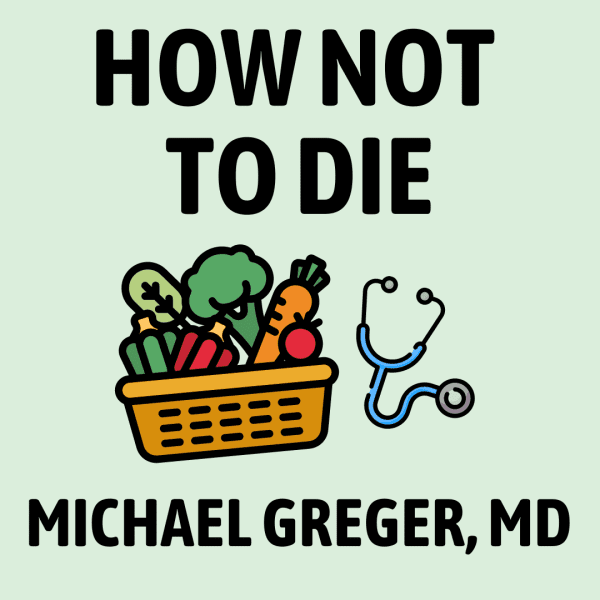
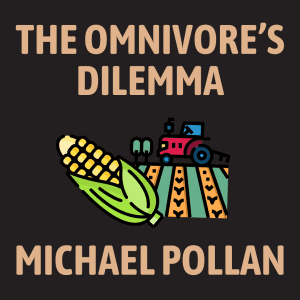
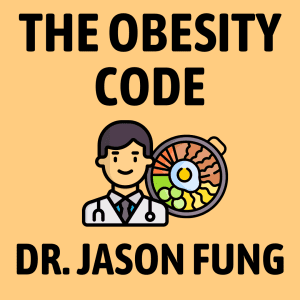
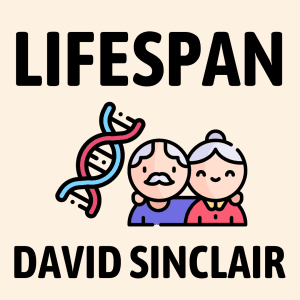
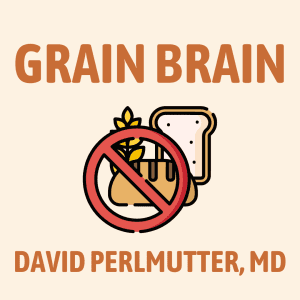

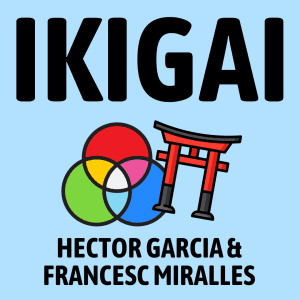


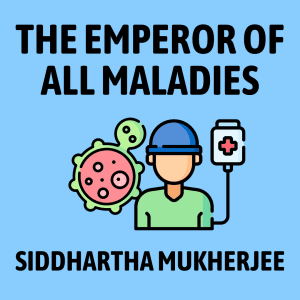

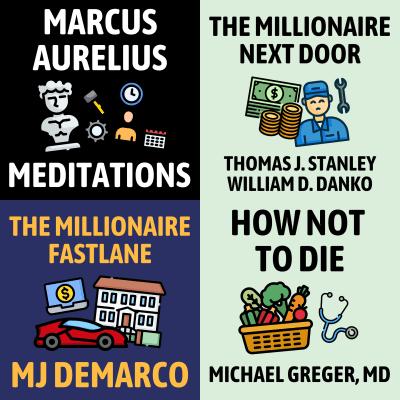













Community Notes